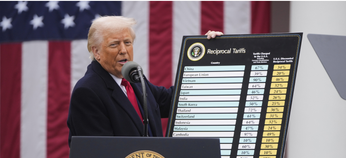
Kremlin sees opportunity in Kazakh unrest

An outbreak of violence in Kazakhstan last week that has left dozens of protestors dead could dramatically shake-up the political situation in one of Russia’s most politically-important neighbors. Most experts said the unexpected flare-up of discontent was the result of weariness with the 32-year rule of Nursultan Nazarbayev. More conspiracy-minded observers, however, voiced suspicions that protests have been fueled by Nazarbayev’s political heir, Kazakh President Kassym-Jomart Tokayev, as he seeks to become an independent political player.
- The opposition protests began shortly after New Year, apparently sparked by the government’s decision to remove price controls for liquefied petroleum gas (LPG), which is a popular car fuel. The subsequent spike in LPG prices came on top of other, more deep-seated economic problems (inflation ran at 8.5 percent last year). And it wasn’t long before the protests became politicized — one of the most popular slogans among demonstrators was directed at ex-president Nazarbayev: ‘Old man, out!’
- Nazarbayev has been in charge of Kazakhstan since 1989 when the country was still a part of the Soviet Union. In 2019, he stepped down as president and named Tokayev as his successor — although he retained several important posts (including the chairmanship of the Security Council that gave him oversight of the security forces). Many believed that Nazarbayev was still in full control of the levers of power.
- Once the protests had begun, they escalated rapidly. The first demonstrations took place Sunday in Kazakhstan’s Western oil-producing regions and then they spread to most major urban areas. Within two days, protestors were in effective control of Kazakhstan’s largest city, Almaty. Up until 1997, Almaty was the Kazakh capital, but then Nazarbayev decided to move the capital to the northern city of Astana (now known as Nur-Sultan). It was widely understood at the time that one of the reasons for this move was to make it harder for protestors to topple the government.
- By Wednesday evening it was clear the regime was hanging by a thread. Tokayev had attempted to defuse the situation by announcing LPG price controls would be reinstated and that Nazarbayev was stepping down as head of the Security Council. But it didn’t work. In Almaty, protestors disarmed soldiers and police officers, and prepared to do battle with security forces. In the middle of the night, Tokayev appealed for help to the Collective Security Treaty Organization (CSTO), a Russia-dominated military alliance that also includes Armenia, Tajikistan, Kyrgyzstan and Belarus.
- The request from Kazakhstan was approved and the CSTO announced Thursday it was sending a peace-keeping mission to the Central Asian state. The bulk of the 2,500-strong force consists of Russian troops, which began arriving in Kazakhstan the same day. Ironically, it was Armenian Prime Minister and current-CSTO chair Nikol Pashinyan who had to make the announcement that a peace-keeping mission would go ahead (during last year’s war between Armenia and Azerbaijan Pashinyan asked the CSTO for help but Russia declined to intervene in that conflict).
- The government appeared to have more or less re-asserted control on Friday, with the protests looking like they had run out of steam. An end to the internet blackouts that had accompanied the worst of the violence meant that eye-witness accounts about the chaos in Almaty began gradually to emerge. Russian Defense Ministry officials said that Russian soldiers were involved in securing Almaty airport, one of the sites that had been targeted by protestors and damaged by looting.
The death toll remains unclear. Kazakhstan’s Interior Ministry has said that 26 “armed criminals” were “liquidated” and 3,811 people detained, while 18 members of the security forces were killed. Reports from journalists in Almaty on Friday suggested that there were still bodies lying in the streets. Tokayev said Friday morning that he had given a shoot-to-kill order to the security forces to deal with what he described as the activities of “bandits” and “terrorists”.
What are the experts saying?
Arkady Dubnov, political analyst and expert on Central Asia
“The protests are aimed directly at Nazarbayev. People on the streets are shouting ‘Old man, out!’ so often that it has become an internet meme. Nazarbayev’s family and the elite groups that formed around him succeeded in provoking this explosion of deeply-buried dissatisfaction. We all remember the Arab Spring and [Russian opposition protests on] Bolotnaya Square — these are also examples of accumulated dissatisfaction that exploded once triggered. In Russia in 2011-12, it was possible to quash the protests because power was concentrated in the hands of a single leader, whereas Kazakhstan today finds itself in a position of schizophrenic dual-power. Nazarbayev left but didn’t leave, the authorities were divided and this meant that it was impossible to carry out any real reform.”
Aleksei Makarkin, deputy director of the Center for Political Technologies
“Even if no-one expected them to break out now, there were a lot of preconditions for protests in Kazakhstan. Social divisions have been growing, corruption blossoming and economic growth has been deeply irregular, alternating between boom and bust. The economy is deeply dependent on raw materials. While there are many nations with similar problems, Kazakhstan is a relatively young country. The people there are more active and ready to get angry about the clan-based power structure, corruption and a lack of social mobility.
An important point to remember is that the Nazarbayev ‘power transition’ never really took place… the security forces, the economy and the ruling elite all remained under Nazarbayev’s control — and this was understood by everyone. You can’t say that the protests are aimed exclusively at Nazarbayev. But as the ‘father of the nation’ he is held responsible for all the good things and all the bad things, and he has become the main brake on change.”
Temur Umarov, research consultant at Carnegie Moscow Center
“I don’t think that these protests will cross a Rubicon. The regime will, more likely than not, survive this onslaught — it’s sufficiently resilient. On the other hand, what is going on is unprecedented and the authorities will be forced to make some big concessions.
Moscow will be following the situation very closely. It’s quite dangerous for Russia: Kazakhstan is on our borders, which makes it a question of national security. The Foreign Ministry will likely talk — as usual — about ‘color revolutions’ instigated by the West, but there are much more important things at stake here. The Kazakh power transition was interesting to the Kremlin as one possible path for the development of the Russian regime. Moscow will observe the possible risks of such a choice, and will learn from Kazakhstan’s mistakes.”

What does it mean for Russia?
- Kazakhstan is not just the largest country in Central Asia (it’s about the size of Western Europe), but is a key oil exporter and shares a 4,750-mile border with Russia. It’s widely assumed that Russian President Vladimir Putin considers Nazarbayev to be an old comrade. When Nazarbayev initiated a power transition in 2019, formally giving up his position as head of state while informally remaining in charge, this was seen as an approach that could be imitated by Putin. If Russia were to go down such a path, there is already a position ready for Putin — head of the State Council, a body which saw its powers enlarged in 2020 as part of constitutional reforms. However, for the moment, this is seen as an unlikely scenario. Kremlin sources are already briefing journalists that Putin will stand for another presidential term in 2024. Indeed, the recent events in Kazakhstan mean Putin is now even less likely to follow Nazarbayev’s example.
- Kazakhstan is one of the countries that is often considered — at least since Russia’s 2014 annexation of Crimea — a possible target for Russian expansionism. Russians in Kazakhstan, who mostly live near the northern border, make up 20 percent of the population, and Russian politicians occasionally make inflammatory claims about how Kazakhstan is ‘Russian land’. However, the Kremlin has been more cautious about stoking tensions: Russian nationalists have been jailed for ‘preparing a coup in Kazakhstan’, and Russian officials did not protest against Kazakh plans to switch the Kazakh language from using the Cyrillic alphabet to the Latin alphabet. The arrival of Russian soldiers in Kazakhstan this week is unlikely to lead to a radical attempt to move Russia’s borders. But if the Tokayev-Nazarbayev regime survives, Russia will be able to push forward new demands — and Kazakhstan will likely be obliged to make concessions. It’s guesswork what sort of demands Putin might make of Kazakhstan: possibly a new status for the Russian language, or an official recognition from Kazakhstan that Crimea is part of Russia.
- Political analysts who spoke to The Bell were of one mind that the protests were the result of economic problems and weariness with the 32-year rule of Nazarbayev. However, conspiracy theories are also popular: particularly the idea that the protests could have been deliberately encouraged by Tokayev as a way to rid himself of Nazarbayev’s legacy and consolidate power in his own hands. Indeed, few would dispute that Tokayev has used the unrest to his advantage by ousting close allies of Nazarbayev. These include Prime Minister Askar Mamin; Karim Masimov, the head of the National Security Committee (who was also arrested); and Masimov’s deputy, Samat Abish (who is Nazarbayev’s nephew). Furthermore, it’s more than a little odd that the 81-year-old Nazarbayev has not been seen since the beginning of the crisis, nor issued any statements (his last appearance in public was on a visit to Russia in late December). His current location, the state of his health and his opinions about recent events are all unknown — and there are online rumors that he and his family have fled the country.
Why the world should care: Whatever happens in Kazakhstan in the coming days, thousands of Russian soldiers are already inside the country. Officially, they will remain there for no more than a year, but this could turn out to be much longer. If — as appears likely — the Tokayev-Nazarbayev regime survives, Putin will have a rare window to ramp up Russia’s influence in Central Asia.



PAID SUBSCRIPTION LAUNCH
From May 1, 2025, The Bell in English will no longer be free
From May 1, 2025, all The Bell’s newsletters and online content will be behind a paywall. We have taken this decision so that The Bell can remain financially independent, and maintain our high standards of journalism and economic expertise






